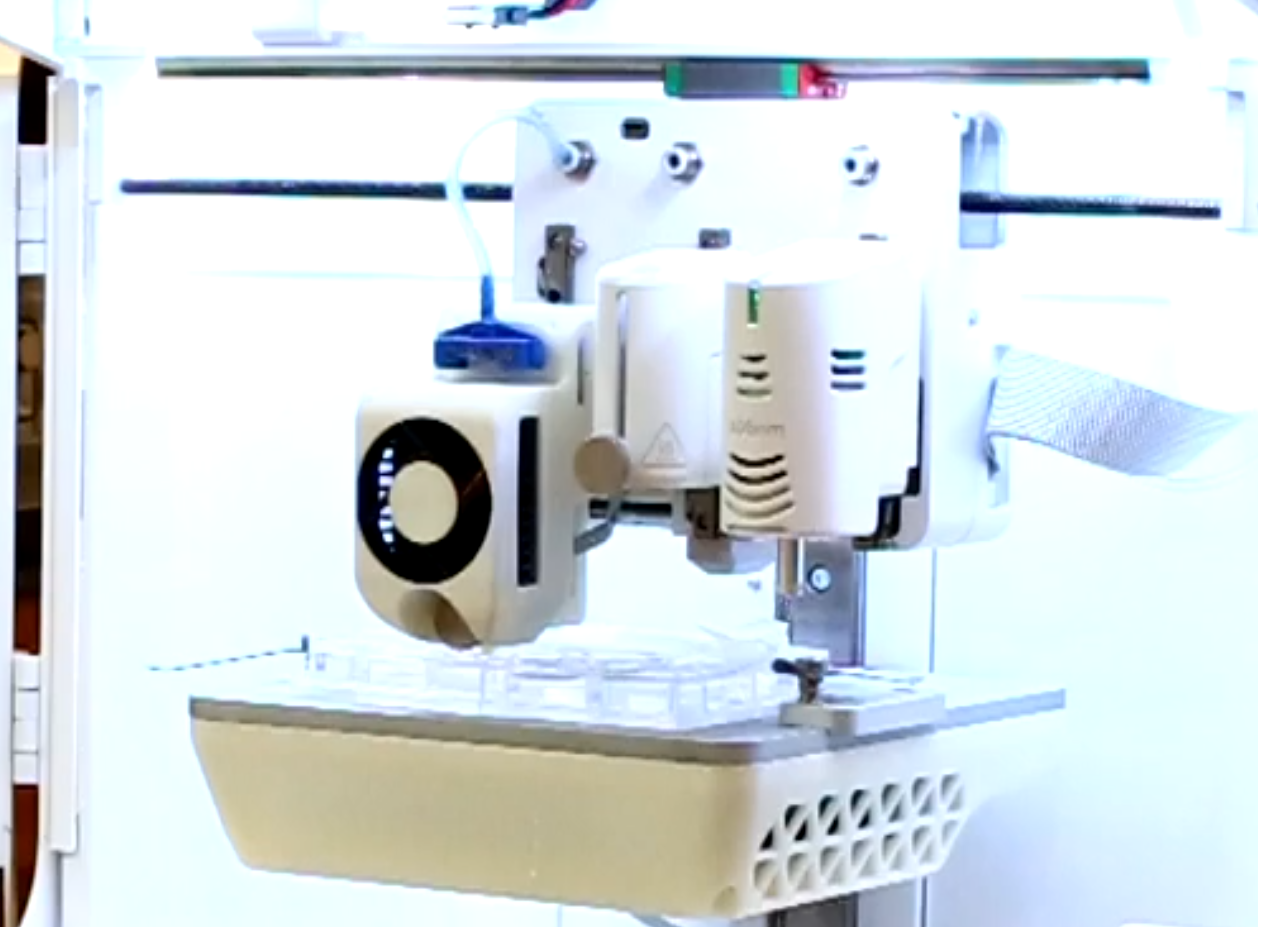The Biomaterials lab offers researchers to use state of the art instruments for their bioprinting needs. The lab has multiple bioprinters and characterization instruments to quantify various physico-chemical properties of the biomaterials. These instruments are available for researchers at Rice and also for non-Rice researchers.
Cellink BioX is an advanced and versatile bioprinter. The BioX can be used to 3D print scaffolds with thermoplastics, hydrogels and cells. This bioprinter can use up to three different materials to fabricate scaffolds or print cells directly. The 3D printing process is achieved by extrusion and inkjetting. Adam Navara, a graduate student shares insight into his research and demonstrates the bioprinter in action.
EnvisionTEC Bioplotter is one of the advanced bioprinters available for researchers at the BML. This bioprinter can be used to fabricate complex scaffolds using up to five different materials including thermoplastics, ceramics, metals, hydrogels and cells. Katie Hogan, a graduate student shares her research and explains various features of the Bioplotter.
RegenHU 3D Discovery is an advanced 3D printer capable of 3D printing scaffolds using extrusion, inkjet and electrospinning. Materials that can be used with this printer include thermoplastics, hydrogels and cells. The printer is equipped with coaxial print head and melt-electrospinning writing head. Sergio Barrios, a graduate student shares the use of this printer in his research and how to fabricate scaffolds using melt-electrospinning writing tool, an advanced feature of the printer

